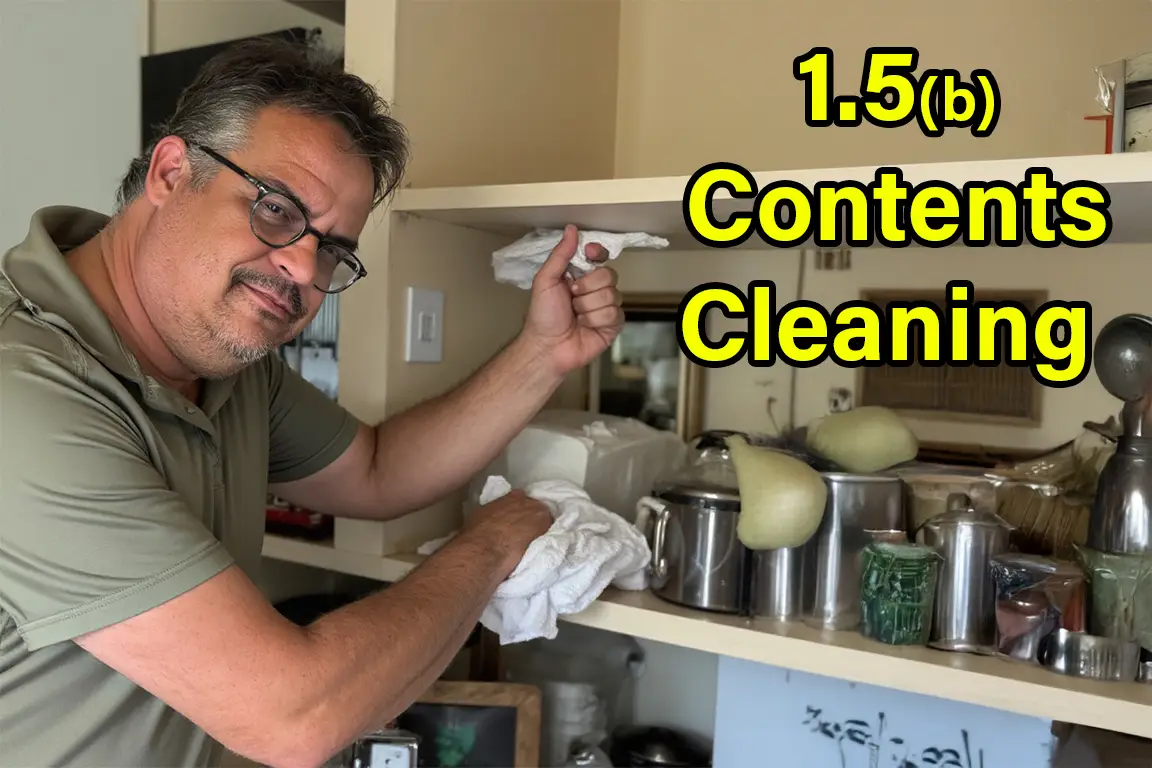Choose the Right Location
Choosing the right location for cleaning your belongings is a key step in the contents cleaning process. Whether you’re tackling the job yourself or hiring help, the goal is to prevent recontamination and protect sensitive individuals from exposure during and after cleaning. Below are the three main location options, with guidance on how to choose the best one for your situation.
Option 1: Clean in Place (Inside the Home)
Cleaning in place means cleaning your contents without relocating them to another area. This can be appropriate when:
- The structure has already been remediated
- You’re working in rooms that tested clean
- The items are lightly contaminated or non-porous
Important Considerations:
- Clean the structure and the contents at the same time. If you clean the contents first, they may get re-contaminated as you clean the surrounding surfaces. Synchronizing structural and contents cleaning ensures everything ends clean—and stays that way.
- Only clean in spaces that have passed a visual inspection and/or post-remediation testing.
- Maintain good ventilation or run a HEPA-filtered air scrubber.
- Use localized containment (e.g., zip walls, plastic sheeting) to isolate the area.
- Clean from top to bottom, and dry to wet, following a logical cleaning order.
Quick Tip:
If you’re cleaning in place, treat the entire room—structure and contents—as a single unit. Start high, cleaning ceilings and upper surfaces first, then work your way down. This helps prevent dust or particles from resettling on cleaned items below.
Option 2: Clean Outside (Garage, Driveway, or Patio)
Outdoor cleaning is a great choice for items that are visibly dusty, dirty, or possibly mold-affected. Working outside helps keep airborne particles out of the living space.
Important Considerations:
- Choose a dry, shaded area with minimal wind and low pollen or humidity.
- Protect cleaned items from outdoor contaminants (use clean tarps or plastic tables).
- Wear proper PPE and avoid cleaning near lawn equipment, chemicals, or dusty areas.
- Garages can work well if they’re ventilated and separated from the home’s interior.
Quick Tip:
Always check wind direction before starting outdoor cleaning. Make sure the breeze isn’t blowing contaminants back toward open doors, windows, or vents—this can cause cross-contamination inside the home.
Option 3: Professional Contents Cleaning (Off-Site)
For high-value, heavily contaminated, or fragile items, off-site professional cleaning may be your best option.
Important Considerations:
- Vet the company’s methods: Do they use HEPA vacuuming, air washing, or non-toxic cleaning methods suitable for chemically sensitive individuals?
- Make sure items are transported in sealed, clean containers.
- Ensure no fragrances, antimicrobial residues, or ozone are used—especially for environmentally sensitive clients.
Best for:
Electronics, documents, textiles, or valuables requiring specialized handling and storage.
Universal Location Guidelines
No matter where you choose to clean, keep these principles in mind:
- Ventilation matters. Always work in areas with clean air flow and HEPA filtration if indoors.
- Prevent cross-contamination. Don’t clean in a space that hasn’t been remediated or that shares airflow with contaminated areas.
- Protect the clean. Once items are cleaned, keep them separated and covered to prevent re-exposure.

